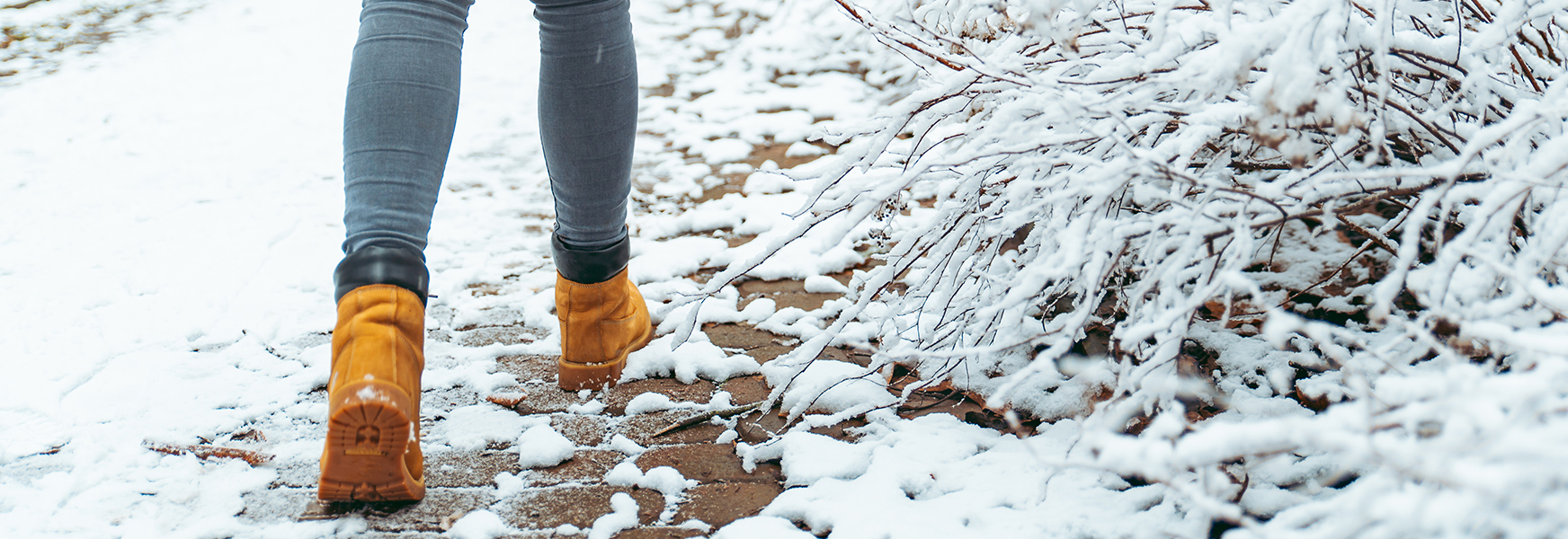It’s “Snow” Wonder The Ground’s Getting Slippery

With the wonder of snowfall come falls and not of the Niagara type. No, we’re talking about the bone breaking, tendon tearing, ligament loosening, and brain bruising kind of fall that happens when a winter cocktail of hydrogen and oxygen molecules mix together in frozen form to create a slick ground surface. The Bureau of Labor Statistics reported 34,860 work-related injuries in 2014 that resulted in at least one day away from work for falls on the same level due to ice, sleet, and snow. “Snow” kidding, that number of injuries accounted for 82% of all incidents attributed to a surface coated with frozen precipitation. Given these statistics, it’s “snow” wonder that MEMIC continues to campaign for slip, trip, and fall (STF) prevention with its STF Prevention and Winter Safety resource pages.
For those passionate practitioners of orthopaedic medicine, it could be said winter is the most wonderful time of the year in terms of STF-related injury treatment. However, with compassion for the pain and suffering of their patients, many orthopaedic physicians offer tips for preventing falls on snow and ice on their organization’s website. For example, the Orthopaedic Associates of Michigan (OAM) says to “Select proper footwear. No single shoe sole material is perfect under all conditions, however, footwear with rubber or neoprene composite soles provides better traction on ice and snow than leather or plastic." We couldn’t agree more, that’s why you can click here to see our winter footwear guide.
Here’s our top 5 tips for safe vehicle entry and egress:
- Wear appropriate footwear for outdoor winter weather. Bring your other shoes and put them on once indoors.
- Park in authorized or cleared parking spaces. Avoid spaces where ice is likely.
- Keep your hands free and use the door, steering wheel, or other surface for support.
- Do not carry too much, and place any items into your vehicle while supported before getting in. If getting out, grab your items once out of your vehicle.
- Take short steps at a slower pace. This helps keep more of your footwear in contact with the ground and keeps you more centered over your base of support
Just to add a bit more on the walk cautiously tip, go “hands free” with your cell phone by keeping it tucked away in your pocket, purse, or handbag. Otherwise, while walking with your phone “in your face” and a drink container in the other hand, it might end up being a case of down goes the phone and up goes the drink as you frantically fall to the ground. Remember, what goes up must come down with the possibility of the drink container adding insult to injury as the beverage splats and splashes on top of you.
No fooling around- slip-fall injuries on ice, sleet, and snow can be debilitating. So, heed these tips and tell yourself there’s “snow” way you want to become a slip-fall casualty. Check out MEMIC’s Safety Net blogs for more resources on slip, trip, and fall prevention.

